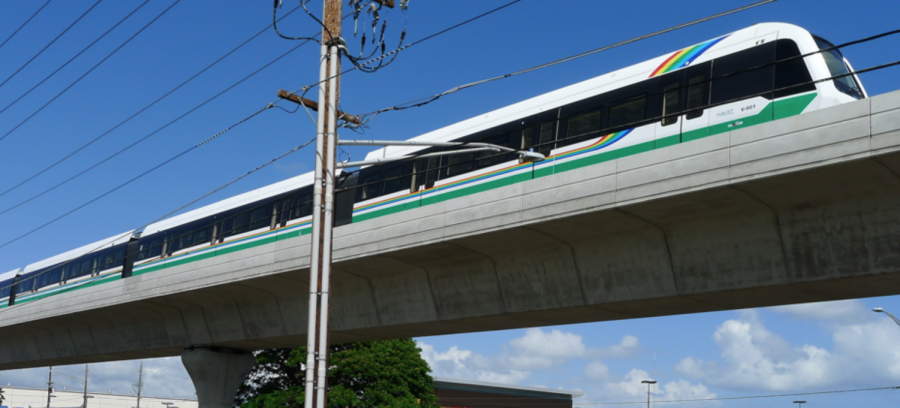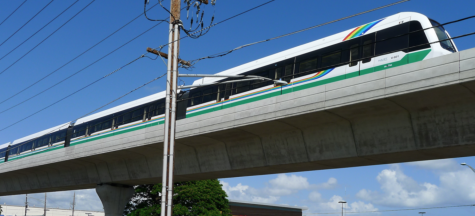Rail Needs to Go
October 24, 2018
The Honolulu Rail Transit project began in 2011 and was originally set for completion in 2018 and is now set to open in 2026. The 40-year long debate on whether or not to build the rail ended in 2008, resulting in construction starting seven years ago. The original cost for the project was $4.6 billion, however, the estimate is currently $8.3 billion, with experts saying that the end cost could be $13 billion.
The budget for the rail has already been spent, but there is no denying that the money that has been dedicated to the project could have been spent on different resources that would have a positive effect on the citizens of Hawai’i. The rail claims that it will alleviate our current traffic problem, but the fact of the matter is it won’t.
The rail will run from Kapolei to the edge of Waikiki and will have 21 stations across the island; including locations in Waipahu, Pearl City, Aiea, Kalihi, Chinatown, and downtown Kaka’ako.
To help pay for the rail project the government has added a surcharge to the General Excise Tax(GET). The GET is a tax business owners have to pay that gets taken out of their gross income. The business usually then passes it down to the consumer. The surcharge increases the 4 percent regular surcharge to 4.5 percent. The surcharge has been extended by Governor Ige to the year 2037. This makes it the country’s most expensive transit project per capita (100 people).
The city claims that at least 116,000 passengers will ride the rail daily once it is completed. A study that was done under the previous governor of Hawaii, Linda Lingle, found that the rail would attract a substantially smaller amount of daily passengers; too few to keep the project running.
Oahu is ranked 2nd worst when it comes to traffic. This is due to the fact that there are almost the same amount of vehicles as there are people on the island. Although they say that this is supposed to benefit the city and its residents’ other states such as California and New York are prime examples as into why this won’t solve any crisis.
Other cities such as New York and Oakland have also built rapid transportation. Those cities are also known for having some of the worst traffic conditions. They are prime examples of why this idea won’t help anything in Oahu. While these cities do have a high number of commuters it is because of how the complex the layout is and that the system runs underground. The layout for the HART very simple and only a two-way rail going back and forth unlike those in the mainland.
The project is not going to attract residents the way they think it will. There is a reason why people take their car or the bus to get to their destination. Unless the rail plans on building a station at every street corner (which it isn’t) commuters will still have to either have to take The Bus or walk a far distance to finally get to their location. This will just create more of an inconvenience.
Residents who don’t have the luxury of a car can take the bus. For students, a one-way trip costs $1.25 and $2.50 for an all-day pass. The time it will take the rail to travel from Kapolei to Downtown is fifty-three minutes. This is longer than what it takes the Country Express C Bus. It currently takes The Bus 38 minutes if there is light traffic and fifty-two if there is heavy traffic.
When it comes down to it people are going to take the mode of transportation that is going to be easiest for them. For most of the population on this island that’ is going to be their car. What this city should have done is researched a way that would have helped the overall flow of traffic. It could have been adding a contraflow lane to the highway and other busy streets in the afternoon just like they do in the morning.
At this point in time, there can be no real call to action. They are too far ahead in construction to stop it and tear it all down and there can be no boycott because the rail won’t be open to the public until years from now. The only thing I want the city and my fellow peers to do is being more aware and cautious with what’s going on in your surrounding. To choose their elected officials wisely and to make sure they’re going to represent them to their abilities.



